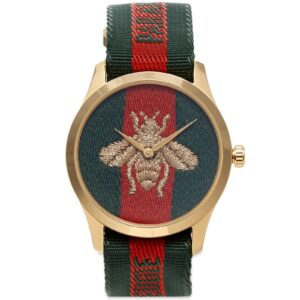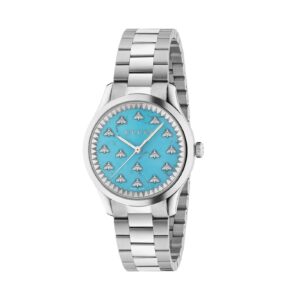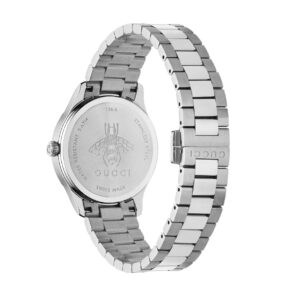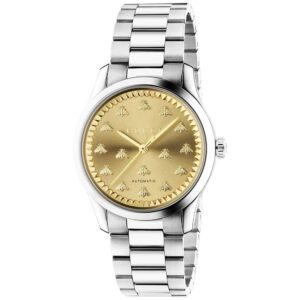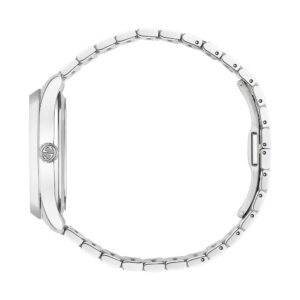In 1921, Guccio Gucci bought his own shop on Via della Vigna Nuova in Florence, Azienda Individuale Guccio Gucci, where he sold imported leather luggage. He also opened a small workshop to have his own leather goods made by local craftsmen. Eventually, a larger workshop had to be acquired to house Gucci’s sixty artisans. In 1935, the invasion of Ethiopia by Mussolini led the League of Nations to impose a trade embargo on Italy. Leather became scarce, pushing Guccio Gucci to introduce other fabrics in the composition of the products, such as raffia, wicker, wood, linen and jute. The rombi motif, a Gucci signature, was created. The Guccis developed a new tanning technique to produce “cuoio grasso”, which became a Gucci trademark. In 1937, Gucci launched its handbags.
Guccio’s wife and children all worked in the shop. Aldo, the son of Guccio, became increasingly involved in the family company since he started working there in 1925. He convinced his father to grow by opening a new shop in Rome (21 Via Condotti) in 1938, and launched more Gucci accessories (gloves, belts, wallets, keychains). During World War II, the artisans of Gucci worked on making boots for the Italian infantry.
The company made handbags of cotton canvas rather than leather during World War II as a result of material shortages. The canvas, however, was distinguished by a signature double-G symbol combined with prominent red and green bands. After the war, the Gucci crest, which showed a shield and armored knight surrounded by a ribbon inscribed with the family name, became synonymous with the city of Florence.
-
GUCCI G-TIMELESS CONTEMPORARY 38MM NYLON WEBBING GOLD PVD TIMEPIECE
Gucci’s watches are future heirlooms, and this one – replete with the Florentine couturier’s intricate detailing – is a classic example. Set on an signature scarlet and emerald striped strap, it’s glimmering gold casing is durably coated and houses a premium Ronda quartz movement. To finish, its opulent colouring is mirrored at the centre of the face, where an elegant embroidery of the label’s iconic bee motif sits proudly.
Estimated delivery on 25 April - 1 May, 2025$1,600.00 EAN: 139000088326 -
GUCCI G-TIMELESS AUTOMATIC TURQUOISE 32MM YA1265044
The G-Timeless collection continues to explore emblematic House codes in new ways each season. A recognisable Gucci symbol, the bee appears as a subtle detail atop this watch. The accessory’s turquoise dial is paired with a 32mm stainless steel case and bracelet to add a softer touch. Shop Gucci watches at Chisholm Hunter today.
Estimated delivery on 25 April - 1 May, 2025$1,500.00 EAN: 152000086666 -
GUCCI G-TIMELESS MULTIBEE 38MM YELLOW SUN BRUSHED DIAL AUTOMATIC YA1264191
G-Timeless MultiBee 38mm Yellow Sun brushed Dial With Bees Automatic Stainless Steel Bracelet Watch, YA1264191
The G-Timeless watch collection by Gucci is home to a beautiful selection of elegant dress watches for men and women.
Estimated delivery on 25 April - 1 May, 2025$1,600.00 EAN: 088000086613



